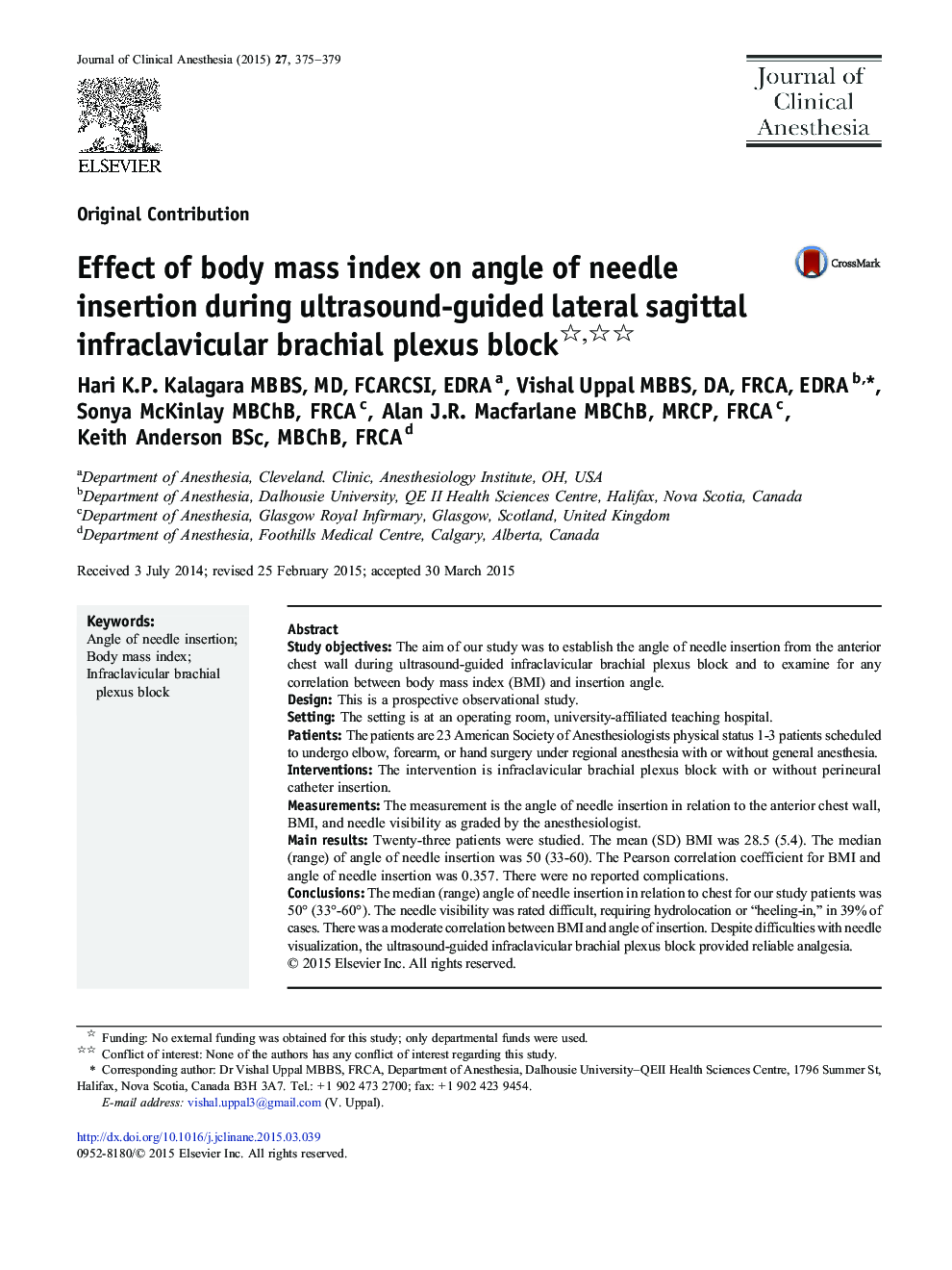| Article ID | Journal | Published Year | Pages | File Type |
|---|---|---|---|---|
| 2762385 | Journal of Clinical Anesthesia | 2015 | 5 Pages |
•Infraclavicular brachial plexus block is particularly useful for elbow, forearm, and hand surgery.•Studies using magnetic resonance imaging scans have reported a shallow angle from coronal plane, implicating that needle visualization should not be difficult.•We measured the angle of needle insertion in relation to the anterior chest wall while performing ultrasound-guided infraclavicular block.•The median angle of needle insertion in relation to chest for our study patients was 50° with a range of 33°-60° (much steeper than previously reported).•Despite the difficulties in needle visualization due to steep angle of needle insertion, the infraclavicular brachial plexus block still provided reliable anesthesia with low complication rates.
Study objectivesThe aim of our study was to establish the angle of needle insertion from the anterior chest wall during ultrasound-guided infraclavicular brachial plexus block and to examine for any correlation between body mass index (BMI) and insertion angle.DesignThis is a prospective observational study.SettingThe setting is at an operating room, university-affiliated teaching hospital.PatientsThe patients are 23 American Society of Anesthesiologists physical status 1-3 patients scheduled to undergo elbow, forearm, or hand surgery under regional anesthesia with or without general anesthesia.InterventionsThe intervention is infraclavicular brachial plexus block with or without perineural catheter insertion.MeasurementsThe measurement is the angle of needle insertion in relation to the anterior chest wall, BMI, and needle visibility as graded by the anesthesiologist.Main resultsTwenty-three patients were studied. The mean (SD) BMI was 28.5 (5.4). The median (range) of angle of needle insertion was 50 (33-60). The Pearson correlation coefficient for BMI and angle of needle insertion was 0.357. There were no reported complications.ConclusionsThe median (range) angle of needle insertion in relation to chest for our study patients was 50° (33°-60°). The needle visibility was rated difficult, requiring hydrolocation or “heeling-in,” in 39% of cases. There was a moderate correlation between BMI and angle of insertion. Despite difficulties with needle visualization, the ultrasound-guided infraclavicular brachial plexus block provided reliable analgesia.
